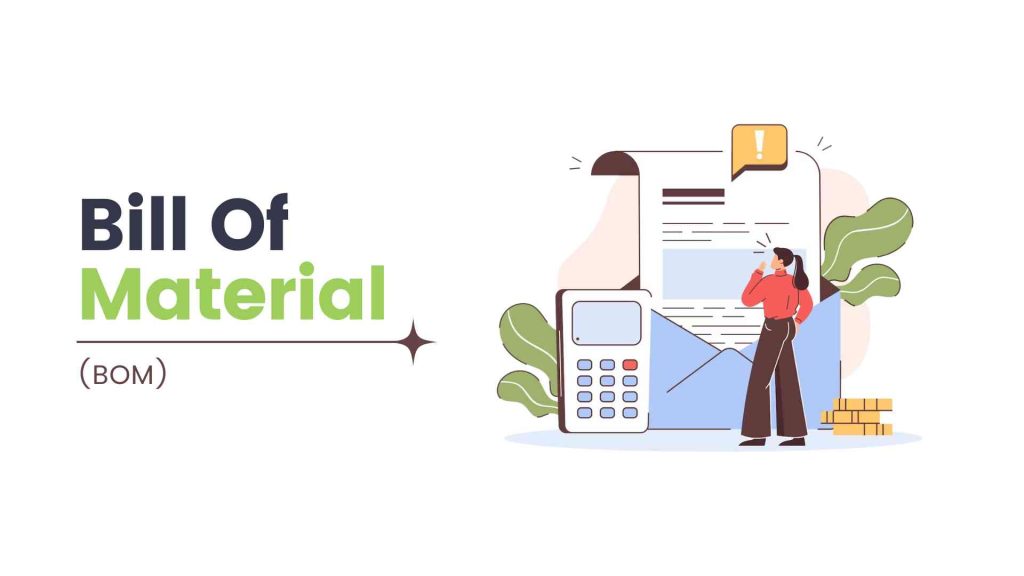What is a Bill of Materials (BOM)?
A Bill of Materials (BOM) is a comprehensive inventory of all the raw materials, components, subassemblies, and parts required to manufacture a final product. It outlines the hierarchical structure of the product, detailing the quantity and description of each item, along with any relevant instructions, specifications, and other data. BOMs serve as foundational documents in various industries, including manufacturing, engineering, construction, and more.
What is MBOMs vs EBOMs?
MBOM (Manufacturing Bill of Materials): This type of BOM focuses on the materials and components required for manufacturing. It includes information about the manufacturing methods, techniques, and resources needed to produce the final product.
EBOM (Engineering Bill of Materials): The EBOM emphasizes the design and engineering aspects of the product. It includes information about the product’s design structure, dimensions, materials, and specifications.
What are the Necessary Elements of a BOM?
A comprehensive BOM typically includes the following elements:
Item Number/Identifier: A unique code or number is assigned to each item in the BOM.
Description: A clear and concise description of the item.
Quantity: The quantity of each item required for the assembly.
Unit of Measure: The measurement unit used for each quantity.
Reference Designators: Identifiers that link items on the BOM to specific locations on the product.
Part Number: The manufacturer’s part number or identifier for each component.
Revision Level: The version or revision of the item or BOM.
Notes and Instructions: Additional information or instructions relevant to the assembly.
Subassembly Structure: Hierarchical arrangement of components and subassemblies.
Suppliers and Sources: Information about where to obtain each component or material.
How to Create BOMs Quickly & Effectively?
Use Specialized Software: BOM management software or Product Lifecycle Management (PLM) systems can streamline the BOM creation process.
Collaboration: Involve relevant teams, such as design, engineering, and procurement, to ensure accuracy and completeness.
Standardization: Develop standardized templates and guidelines for consistent BOM creation.
Data Integration: Integrate data from design and manufacturing tools to reduce manual data entry.
Regular Updates: Keep BOMs updated as designs evolve or new components are introduced.
What is Making the Most of BOMs?
BOM Confidentiality: Protect sensitive information by controlling access to the BOM and using secure systems.
BOM Detail: Determine the appropriate level of detail for your BOMs based on your industry and manufacturing processes.
BOM Accuracy: Accurate BOMs are essential to prevent errors, reduce rework, and ensure successful production.
Business Impact: An inaccurate BOM can lead to production delays, increased costs, and poor product quality.
BOM’s Value: BOMs provide a structured product overview, aiding in cost estimation, production planning, and regulatory compliance.
What are the Advantages of Using a BOM?
Clear Communication: BOMs provide a standardized way to communicate product structure to different departments.
Efficient Planning: BOMs aid in procurement, production scheduling, and resource allocation.
Cost Estimation: BOMs help calculate accurate manufacturing costs and product pricing.
Regulatory Compliance: BOMs assist in meeting regulatory and industry standards.
Product Variants: BOMs allow for the easy creation of different product variants using the same base design.
What is BOM Structure?
Single-Level BOM: Lists components directly used in the final product.
Multilevel BOM: Includes immediate components and their subassemblies in a hierarchical structure.
What are the Key Elements of an Effective BOM?
Accurate Data: Ensure the correctness and relevance of all information in the BOM.
Clarity: Use clear and consistent descriptions and identifiers for each item.
Standardization: Follow standardized formats and naming conventions.
Version Control: Maintain a system to track and manage revisions.
Collaboration: Involve relevant teams to ensure comprehensive BOMs.
Integration: Integrate BOMs with design, manufacturing, and ERP systems for seamless data flow.
Who Prepares and Uses BOMs?
- Preparation: BOMs are typically created by engineers, designers, or product managers.
- Usage: BOMs are used by various departments, including procurement, manufacturing, quality control, and sales.
How to Create BOMs in 7 Steps?
- Understand Product: Fully comprehend the product and its components.
- Gather Data: Collect information about materials, components, and subassemblies.
- Organize Hierarchy: Establish the hierarchical structure of the BOM.
- Enter Data: Input data into BOM software or tools.
- Review and Validate: Check for accuracy and completeness.
- Collaborate: Collaborate with relevant teams to ensure accuracy.
- Maintain and Update: Keep BOMs up to date as changes occur.
What Makes the Best Use of BOMs on ERP Systems?
Acumatica Cloud ERP system integrates BOMs with additional business operations, such as inventory management, procurement, and sales, improving efficiency and accuracy. This comprehensive overview should give you a good understanding of the Bill of Materials (BOM), its importance, elements, creation process, and advantages. Feel free to ask if you have specific questions or need further clarification on any aspect!

Vijay comes with a vast experience in ERP and enterprise solutions space with about 20 years of experience in various packaged application like Acumatica, SAP, Orion, Salesforce.com, SugarCRM and, SalesLogix.

